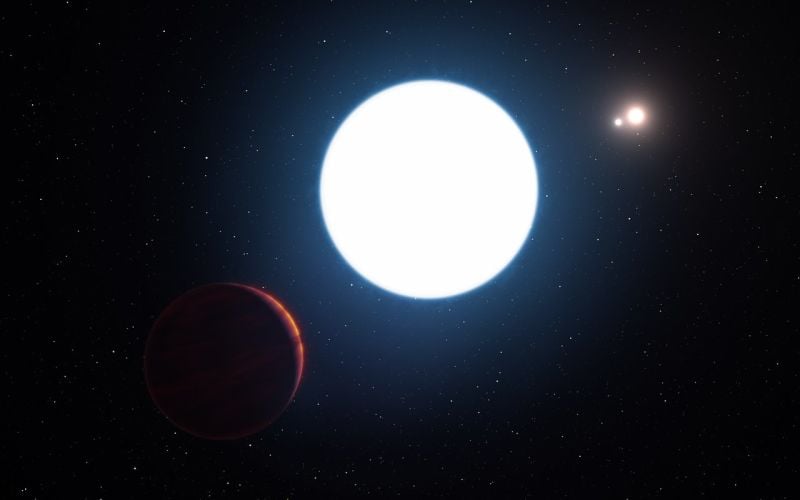Astronomers have discovered a planet with three suns and a huge orbit — each year there is 550 earth years. This is believed to be just the fifth such discovery.
During part of the planet’s orbit, all three stars are visible on the same day, offering triple sunrises and sunsets.

Triple-star systems with detected planets are rare enough. A newly discovered planet is possibly the strange world of sci-fi lovers’ dreams, with its triple sunrises and sunsets and periods of nonstop daylight.
Biggest known orbit in a multi-star system
Found in the Constellation Centaurus, Planet HD 131339 Ab was revealed Thursday by astronomers, who said this new world has three suns and a year lasting 550 Earth years.
Triple-star systems with detected planets are rare enough; this is believed to be just the fifth such discovery. But the new giant gassy world has the biggest known orbit in a multi-star system – 550 Earth years.
Planet HD 131399Ab has four times the mass of our own Jupiter. With such a wide orbit and companion stars, scientists would expect a planet like this to be kicked out in a tug of stellar war. Yet that’s not the case.

Triple sunrise and sunsets
During part of the planet’s orbit, all three stars are visible on the same day, offering triple sunrises and sunsets and allowing for day and night. For about one-fourth of its year — around 100 to 140 Earth years — there’s continuous daylight. That’s because as the big sun is rising, the two smaller ones are setting.
The planet will see different weird combinations of sunrises and sunsets with three suns. Does anybody want to draw a calendar?
The astronomers used the European Southern Observatory’s Very Large Telescope in Chile to spot the planet 320 light-years away. It is one of the few exoplanets — planets outside our own solar system — to be directly imaged.
As amazing as three sunsets and sunrises are, I think nature will have some more surprises in store for us as we continue exploring.












[…] STRANGE SOUNDS REPORT HERE […]